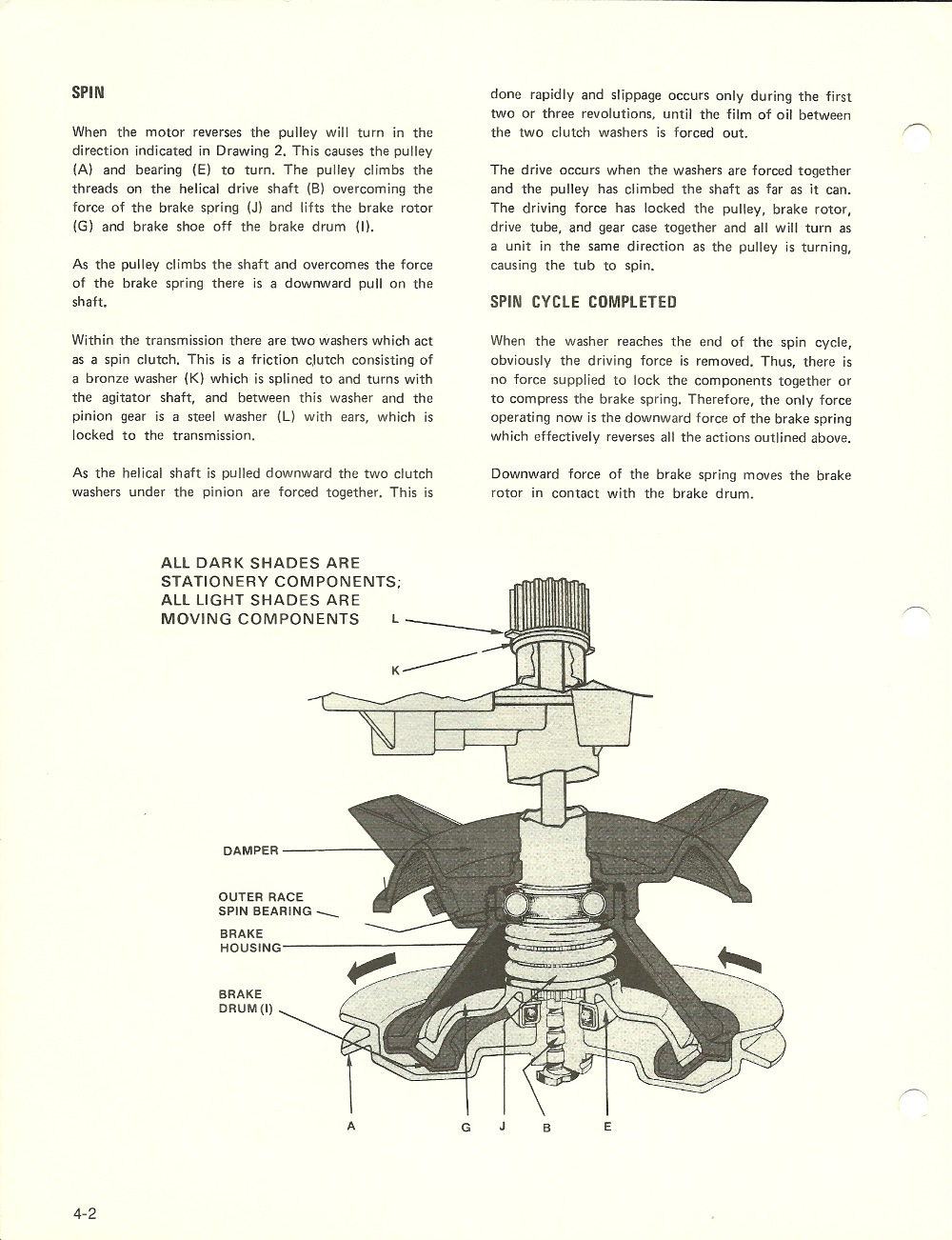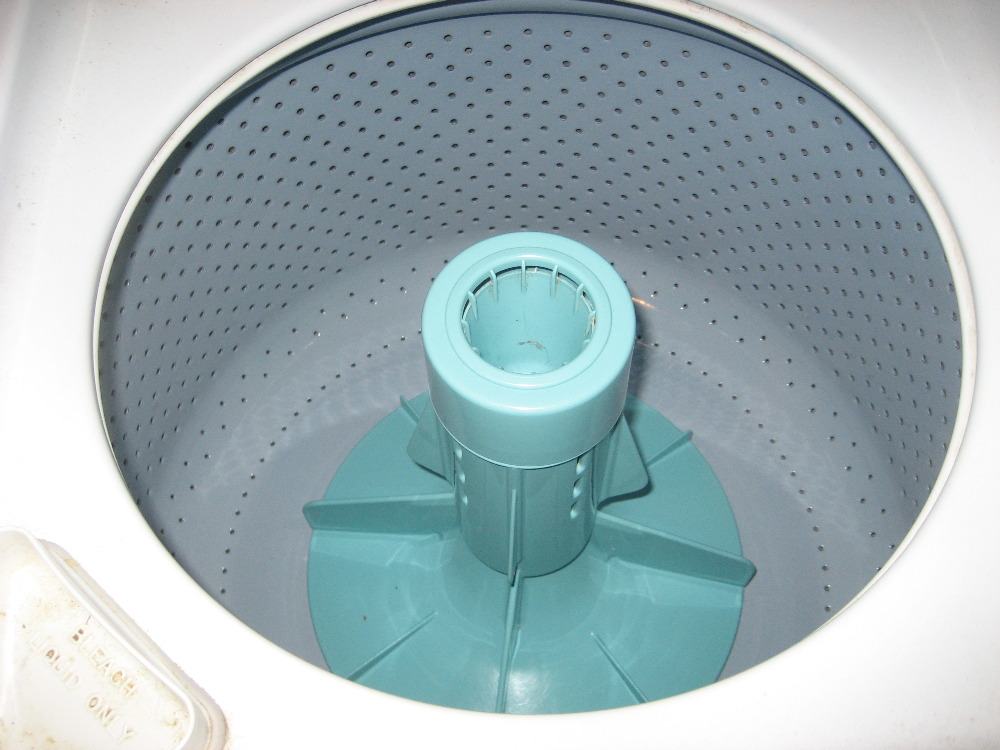|
Thread Number: 37237
Maytag question? |
[Down to Last] |
Post# 553727 11/2/2011 at 21:58 (4,555 days old) by abcomatic  (Bradford, Illinois) (Bradford, Illinois) |
||
|
Here are the model numbers from my 2 everyday machines. HA 606 and A212 The question that I have is: Do these machines have the same mechanisms or did Maytag change them when the new model came out in 1981? Thanks. Gary | ||

|
Post# 553734 , Reply# 1 11/2/2011 at 22:43 (4,555 days old) by combo52  (50 Year Repair Tech Beltsville,Md) (50 Year Repair Tech Beltsville,Md) |
||
MT MECHANISMS | ||
Post# 553735 , Reply# 2 11/2/2011 at 22:44 (4,555 days old) by swestoyz  (Cedar Falls, IA) (Cedar Falls, IA) |
||
 | ||
| Post# 553745 , Reply# 3 11/3/2011 at 00:34 (4,555 days old) by arbilab (Ft Worth TX (Ridglea)) | ||
change from helical to orbital?
Long as this has come up, can someone outline the basic principles of the helical vs. orbital transmission? I'm assuming spin was accomplished with a one-way clutch and both motors reversed. But what is the principle by which the rotary input gets translated to the back-and-forth agitation, and the difference starting in 1989? Purpose for the redesign? Cost reduction? I mean, the old one worked fine.
I know, it's kinda like asking "how does VHS work?". I can explain that but at the same time I've seen a WP trans taken apart and I STILL couldn't tell how it worked. | ||
Post# 553798 , Reply# 4 11/3/2011 at 08:13 (4,554 days old) by Volvoguy87  (Cincinnati, OH) (Cincinnati, OH) |
||
Good question.
I'll let someone better than me explain how the transmissions work. As for difficult to wrap your head around, try a GE 2-speed clutch. I've taken mine apart and put it back together several times and I still don't completely understand how the darned thing works! And yes, it works after having been reassembled :)
Dave | ||
| Post# 553806 , Reply# 5 11/3/2011 at 09:21 (4,554 days old) by macboy91si (Frankfort, KY) | ||
Helical vs. Orbital | ||
| Post# 553871 , Reply# 7 11/3/2011 at 14:58 (4,554 days old) by MaytagA710 () | ||
|
Back page Back page 
| ||
| Post# 553898 , Reply# 10 11/3/2011 at 15:59 (4,554 days old) by DirectDriveDave () | ||
|
Now, those are some cool manuals! | ||
Post# 554284 , Reply# 11 11/5/2011 at 12:39 (4,552 days old) by Kenmore71  (Minneapolis, MN) (Minneapolis, MN) |
||

To my knowledge, the tubs were never changed when they went to the orbital drive transmission. The agitators WERE changed somewhat radically. From 1966 until the end of the "helical" transmission in 1989 the primary agitator used was the tourquise "Power-fin". (There were a handful of exceptions...not that important right now.)
When the "orbital transmission was introduced with it's MUCH faster agitation speed the agitator was initially redesigned with much shorter fins on the bottom and the addition of what I like to call the "shark fins" on further up the shaft. The base of this agitator was also slightly less in diameter which may give the illusion that the tub is wider. Here is a picture of a late A312, orbital transmission with the agitator still in torquoise from about 1990 or so. 
| ||
Post# 554291 , Reply# 12 11/5/2011 at 12:46 (4,552 days old) by Kenmore71  (Minneapolis, MN) (Minneapolis, MN) |
||
 | ||
Post# 554292 , Reply# 13 11/5/2011 at 12:48 (4,552 days old) by Kenmore71  (Minneapolis, MN) (Minneapolis, MN) |
||
 | ||
Post# 1084497 , Reply# 14 8/9/2020 at 18:39 (1,352 days old) by Tennblondie78  (Bowling Green, KY) (Bowling Green, KY) |
||
|
| ||
| Post# 1085278 , Reply# 15 8/16/2020 at 14:44 (1,345 days old) by Good-Shepherd (New Jersey) | ||
|
Anyone happen to have the turquoise version I have one of the orbital drive style agitators in Turquoise if you're still interested. | ||
| Post# 1117898 , Reply# 16 5/21/2021 at 12:25 (1,067 days old) by Petemo (Sheridan, Wyo) | ||
|
Maytag gas stove CRG 305 Hi, I have a Maytag gas stove, CRG 305 purchased in 1990. I am looking parts for it such as new knobs and possibly new burners. Any helpful ideas where to purchase these? Thank you | ||
Post# 1117924 , Reply# 17 5/21/2021 at 19:59 (1,067 days old) by jons1077  (Vancouver, Washington, USA) (Vancouver, Washington, USA) |
||
GE Clutches
GE clutches depend on friction to adjust the speed. The three/four speed clutch is a really good illustrator of this. When the speed solenoids are activated it causes one of the sets of clutch shoes to slip outward away from the spinning motor shaft and attached drive shoes. Less friction means slower speed. This is why the single speed clutch is so much smaller in size. Faster speed means more contact with the shoes and more friction driving the faster speeds. On the three/four speed clutch, when both (medium and gentle) solenoids are activated you have the least amount of contact and friction giving a very slow and gentle speed.
I believe the Versatronic clutch had a similar basic idea involving friction but with a variably adjusted electromagnet that controlled this. Obviously something I will likely never see in my lifetime… | ||

 Comes to the Rescue!
Comes to the Rescue!